Hamilton is an interesting city; it’s seen a lot over the course of its history, which is echoed in many buildings. The downtown core is the focus of this week, which I have spent many years wandering around and watching the ever-shifting changes from the piles of abandoned buildings to many disappearing or being reborn. While I don’t visit the downtown as much anymore with my exploring days shifting to more legal means and the number of abandoned buildings in the downtown becoming slimmer, it certainly was an eye-opening experience going back.
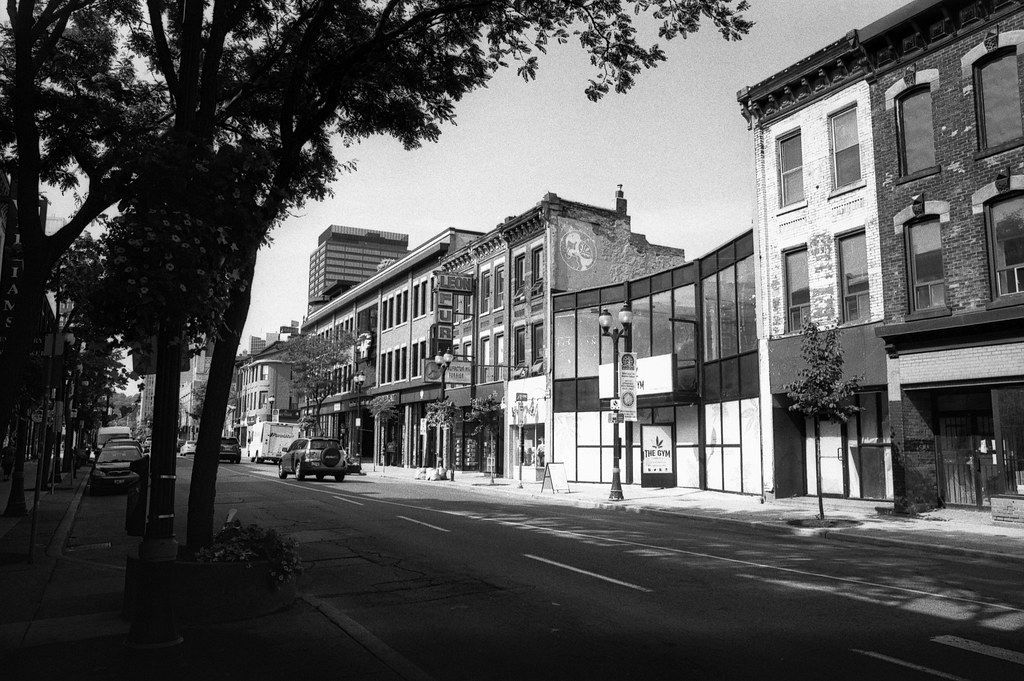
Nikon FM – AI Nikkor 28mm 1:3.5 (Yellow-12) – Fomapan 100 @ ASA-100 – Adox Rodinal (1+100) 60:00 @ 20C
The earliest humans to settle in this region were the Chonnonton or Attiwandaronk peoples; these were first named the Neutral people by French explorers. Étienne Brûlé is accepted to be the first European explorer to pass through in 1616. By 1651 the Attiwandaronk had been driven out, supplanted by the Haudenosaunee after the Beaver Wars. They drove out and wiped out most of the Attiwandaronk and Huron-Wendat peoples. The area now covered by the city of Hamilton was also covered in the Dish With One Spoon Wampum Belt Covenant between the Haudenosaunee and Anishinaabek peoples. By the time of the American Revolution and the formation of Upper Canada, the land was purchased by the British Crown from the Mississaugas of the Credit under the Between the Lakes Purchase of 1792. However, European settlement had started in 1778 on the unceded land. Most of these early European colonists were United Empire Loyalists fleeing from persecution from the American Revolution for remaining loyal to the Crown. Although the area remained a small agricultural settlement, living in the shadow of Stoney Creek, Dundas, and Ancaster. The only difference is that those communities had water sources to power mills. Hamilton got on the map during the second year of the War of 1812, following the capture of the Niagara Region in 1813 by American forces, the British Army retreated and established a fort at the farm of Richard Besley. Known as Burlington Heights, the fort was never directly attacked by saw a relief force march from Burlington Heights to defeat an American army at Stoney Creek and provided shelter for the Ontario Squadron during the Burlington Races. After the War, George Hamilton purchased a farm from James Durand. Hamilton, Durand, and Nathaniel Hughson, all property owners in the area, began to layout a new townsite in 1815. The small town had potential, but things moved slowly. Hamilton was placed into Gore District in 1816 but remained a small settlement in the district, but was often growing at the expense of the other settlements in the region. By 1833 the village of Hamilton had been chartered and quickly became a town shortly afterwards. By 1846 Hamilton had grown into a city. Local business owner and politician Sir Allan Napier MacNab began to put Hamilton on the map first with his grand home, Dundurn Castle and second with the Great Western Railway. He gained investors in one of the early colonial railways in Upper Canada (Ontario) and bullying to have the GWR’s headquarters and railyard in Hamilton. The railway would also kickstart the city’s steel industry as Great Western established the earliest steel mills to convert its network to standard gauge and steel rails. But it wasn’t only steel; Hamilton quickly became one of Ontario’s major industrial centres next to Toronto and St. Catharines. Hamilton’s industrial might attracted huge numbers from the United Kingdom. Hamilton’s boom only continued through the 20th Century, with wartime production pushing the city’s industry’s to their limit as steel went into tanks and ships. And in the post-war period, the city rode high with steel mills, Firestone, and other major employers providing tonnes of good Union jobs. But the high started to crash through the later decades of the 20th Century as a bust crashed through the 1970s through 1990s where tonnes of industries were lost through closure and fire. In 2001, the new city of Hamilton absorbed Ancaster, Dundas, and Stoney Creek along with smaller communities on the peripheries. And while the city suffered major losses, it is starting to see a turn around with many abandoned buildings in the downtown starting to see adaptive reuse and renovation. And while the problems are far from over and underemployment and living rough are still very much a part of the city, things might be on the upswing.
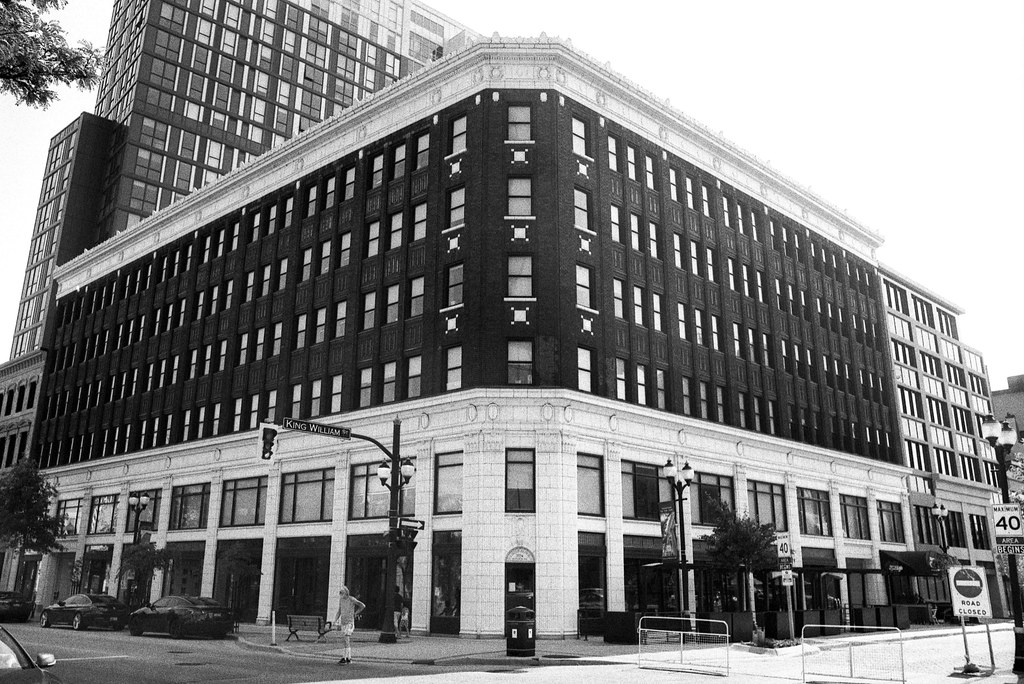
Nikon FM – AI Nikkor 28mm 1:3.5 (Yellow-12) – Fomapan 100 @ ASA-100 – Adox Rodinal (1+100) 60:00 @ 20C
Nikon FM – AI Nikkor 28mm 1:3.5 (Yellow-12) – Fomapan 100 @ ASA-100 – Adox Rodinal (1+100) 60:00 @ 20C
The problem with places I have been and photographed so many times is limiting myself to seven images! Thankfully on this trip, I did limit my geographical area to ensure that I could use the city as a backdrop in a different area of the city for a future week. But even then, despite the problems with the shooting/exposure/development, I ended up with many images that I wanted to include. Sadly, the featured image is a streetscape; sadly, I couldn’t get a good shot of either King or Main, but I settled for a Hamilton icon, the former Leon Fur sign on James Street. From there, the other six buildings included are close to my photographic heart and as a former explorer. Back on a good day, you could easily hit up three or four buildings right downtown in a night, plus a couple of spots out in the industrial zones. The Lister Block is a must, being a success story from construction to abandonment to restoration. Followed by one that is still in need of some TLC. Another two are Whitehern, a beautiful historic home and one of the many museums in the city and a little lesser known than Dundurn Castle (which is worthy of a week all on its own) and the Hamilton GO Centre, a beautiful art decon train station that houses a small museum to the Toronto Hamilton & Buffalo railway one of the city’s lesser-known rail operators. Then, of course, there’s the former Royal Connaught Hotel, another one saved from demolition and showed the start of gentrification in the downtown. And finally, National Pizza, which is a bit juxtaposed, but it was always a stop after a day and night worth of exploration.
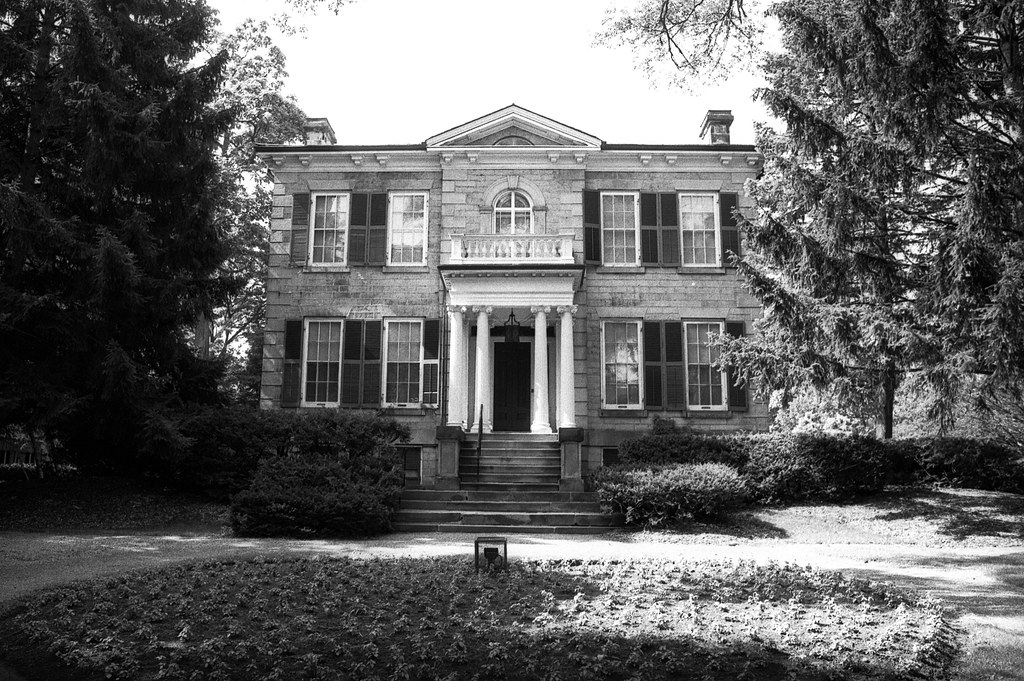
Nikon FM – AI Nikkor 28mm 1:3.5 (Yellow-12) – Fomapan 100 @ ASA-100 – Adox Rodinal (1+100) 60:00 @ 20C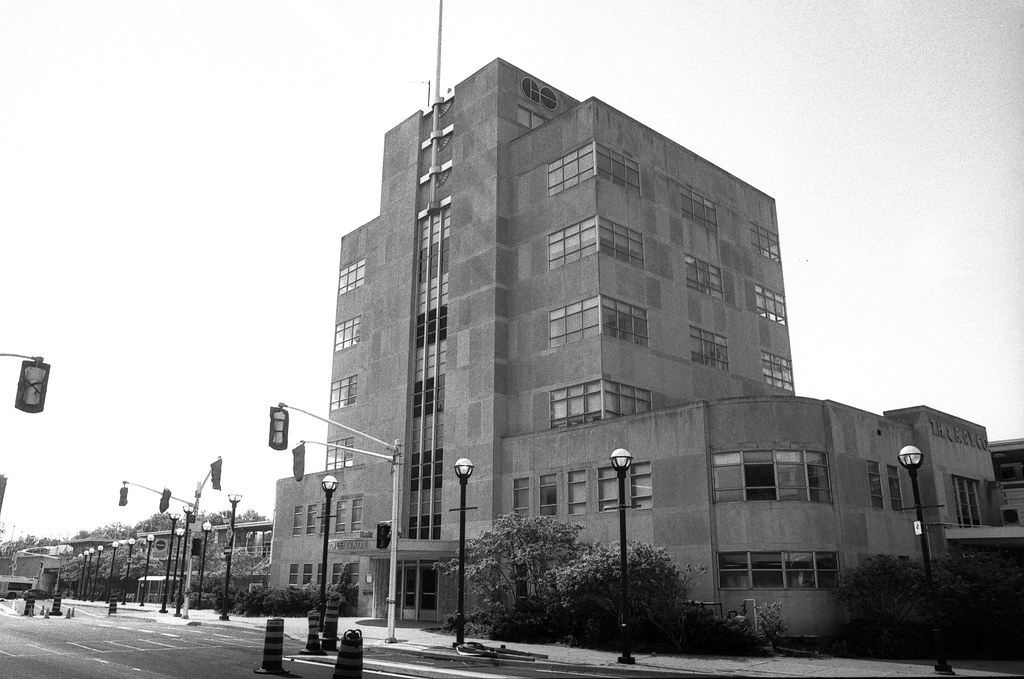
Nikon FM – AI Nikkor 28mm 1:3.5 (Yellow-12) – Fomapan 100 @ ASA-100 – Adox Rodinal (1+100) 60:00 @ 20C
It was not exactly the best day and time to go into Hamilton. The day was bright, hot and humid. Also, a tonne of blue light, so it only made sense to throw on that yellow filter. As I was also shooting another camera, I decided to stick with only a single lens, going with the Nikkor 28mm f/3.5 great for the narrowish streets of Hamilton’s downtown core. I honestly think I should have used a yellow-15 filter instead, given the hard direct sunlight I was dealing with in the mid-morning when I was downtown. This week I again shot the film at box speed, ASA-100, but could have gone with a one-stop under-exposure and shot at ASA-200. Development was a wildly different method; I stand-developed the film, letting it sit almost un-disturbed in a highly dilute formula of Adox Rodinal, 1+100, for one hour with two slow inversions halfway through. While not happy with the results, I have lost the highlights, which is why I think shooting at ASA-200 would have been better.

Nikon FM – AI Nikkor 28mm 1:3.5 (Yellow-12) – Fomapan 100 @ ASA-100 – Adox Rodinal (1+100) 60:00 @ 20C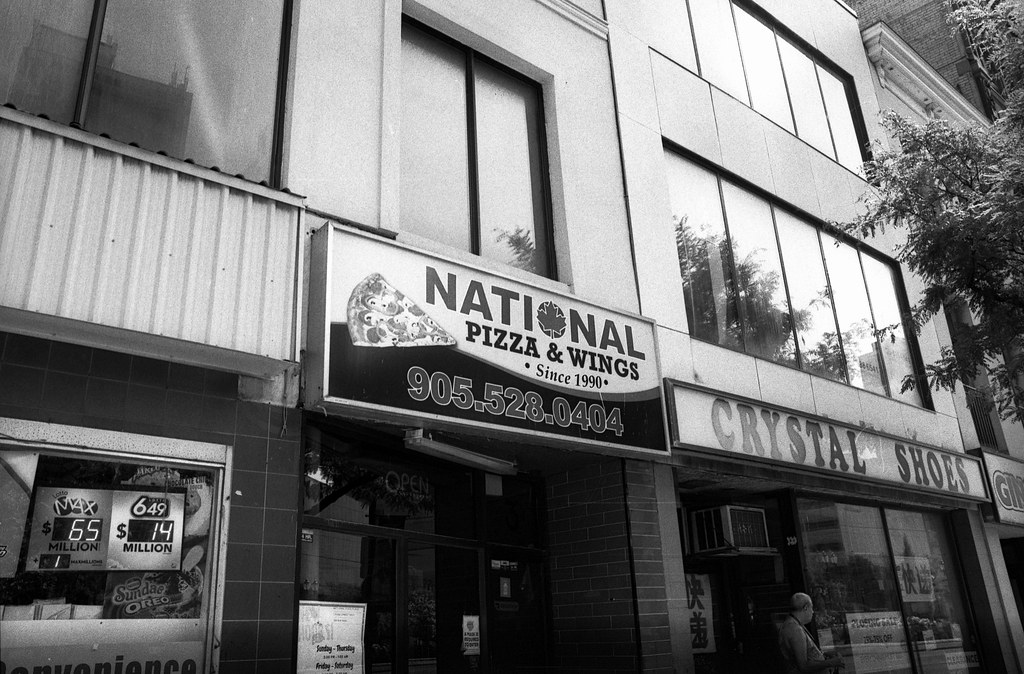
Nikon FM – AI Nikkor 28mm 1:3.5 (Yellow-12) – Fomapan 100 @ ASA-100 – Adox Rodinal (1+100) 60:00 @ 20C
Next week we’re heading out west to a brand new town that I have only read about, St. Marys!